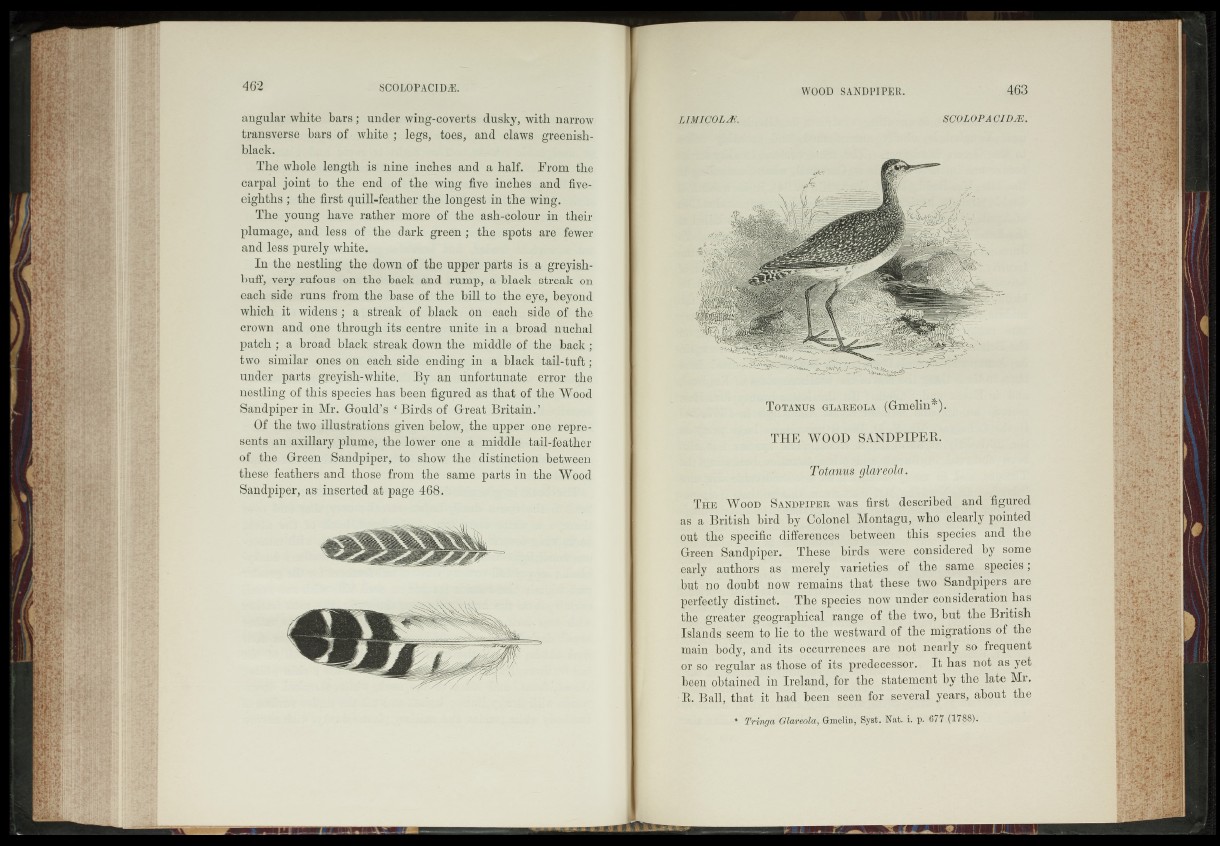
angular white bars; under wing-coverts dusky, with narrow
transverse bars of white ; legs, toes, and claws greenish-
black.
The whole length is nine inches and a half. From the
carpal joint to the end of the. wing five inches and five-
eighths ; the first quill-feather the longest in the wing.
The young have rather more of the ash-colour in their
plumage, and less of the dark green; the- spots are fewer
and less purely white.
In the nestling the down of the upper parts is . a greyish-
buff, very rufous on the back and rump, a black .streak on
each side runs from the base of the bill.to: the eye, beyond
which i t ; widens; a , streak of black, on each.. side of the
crown and one through, ifs centre-unite; in a broad nuchal
patch ; a broad black streak- down, the,- middle' of the back ;
two similar ones on each side ending- in a black tail-tuft;
under parts greyish-white?! By an unfortunate.? ^pte;the
nestling of this species has been figured as that' of the A^ood
Sandpiper in Mr. Gould’s £ Birds of Great Britain.’
■;Gf the two illustrations given-dijel^wj ^.thempper .{type- repfe-
sents an axillary plume, the lower*,one: a middle tail-feather
of the Green Sandpiper, to show the distinction hefaffieih
these feathers and those from ,;tbe same parts^Sthe >Wood
Sandpiper, as inserted at<page 468.'
Totanjjs (Gmelin*),
T H E fw b 5 i)S ANDPIPER.
ToM'ims, ,,
3#gTn.V. w J r a w a s first described, and figured
as J'BjitisS bird by ^ o $ e l .Jhptagu, wh,o clearl^Sinted
pnfcjihe .speech differences.' between tliig species and the
<^£een Sandpiper, birds were considered by spme
early Authors _ as merely - varie|^% sam^A^cies ;
h ltj np^ doubf Inow remain^ fhat thpg^igvoT Sandpipers are
perfectly distinct.^ The sneciQS now, pander consideration has
the greater , geographical range of ^ ’e'Jtwo, pjhpthe British
Islands seem to lie |p tthe .westward of the migrationsjof the
main*bpdv, and its^bccprrences.are/nbli-jrLeArly *so ffeqpent
qp fjo regular as tb§s'%(|| *' B ^ as no^-
been nblarned in Ireland, fg| ,f|he statenmnt, by .the late Mr.
R. Ball, that itha'd‘ % ^ seeji'for leveral years, &lgpnt %g
wr-A Tnng’a 'Glaneola, .Gmelin, Syst. -Nat; i. p;>077-i(.l'7iPh-_*$f